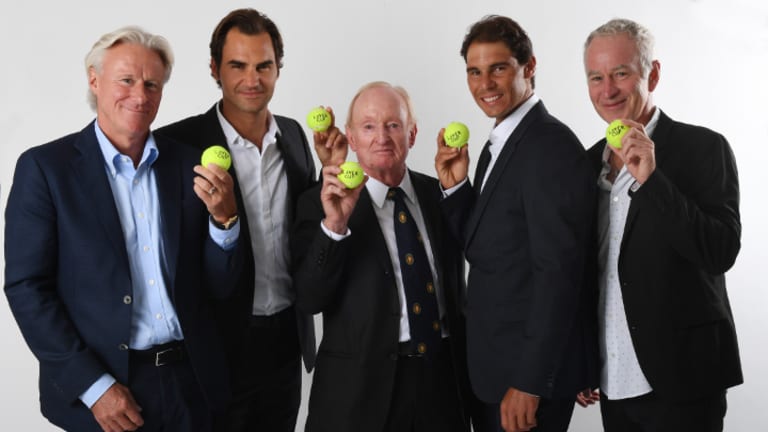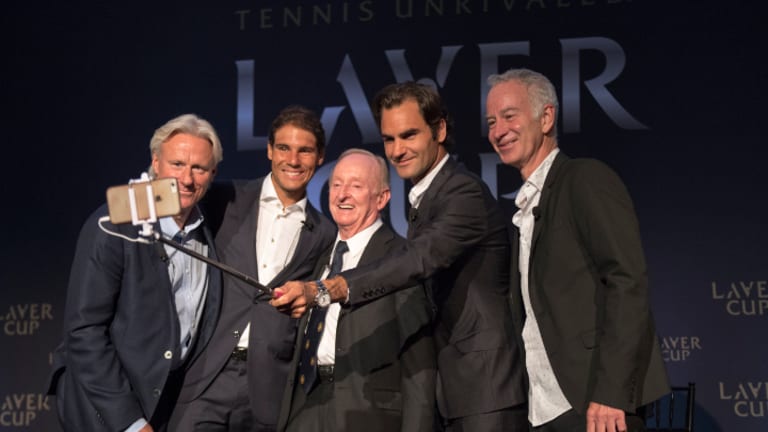NEW YORK—Late in today’s press conference that announced details of the inaugural Laver Cup tournament—scheduled for September 22-24, 2017 at the O2 Arena in Prague, Czech Republic—somebody asked tennis deity Rod Laver about why there seems to be so much respect among different tennis generations when it’s often lacking in other sports, where elders sometimes affect a back-in-the-day superiority.
Laver answered, almost immediately: “Tennis is a different kettle of fish. You’re one on one … when you look out on the court your whole life is just what you can accomplish in that one and a half or two hours.”
There are few people who have done more with those hours—although some have needed five or six—than the five men on stage at the St. Regis Hotel in Manhattan, who boast sixty Grand Slam singles titles among them: Laver himself, clearly both tickled and humbled at having this event named for him; still-active greats Roger Federer and Rafael Nadal; and the chief rivals of the 1970s, Björn Borg and John McEnroe.
As Laver continued speaking, he improvised a short monologue that provided one of those moments that illustrate that no matter how much tennis one watches, or even how many players one interviews, there’s only so much those of us who don’t play the game at the level of the legends can know about the world they inhabit without having it spoon-fed to us. He explained that because you’re so alone on the court, you come to count on players you get to know on the tour, even though those players will, on certain days, be your opponents. He then described how that kinship extends to players of different ages, even though he might not necessarily know them all that well by conventional, social standards.
“I had the opportunity to watch John [McEnroe] play a lot of matches,” said Laver. "We never played against each other, but I think the feeling is like we’re good friends. We haven’t really been close enough for him to think of myself as being a friend, so it’s a unique situation you have with tennis players.”

